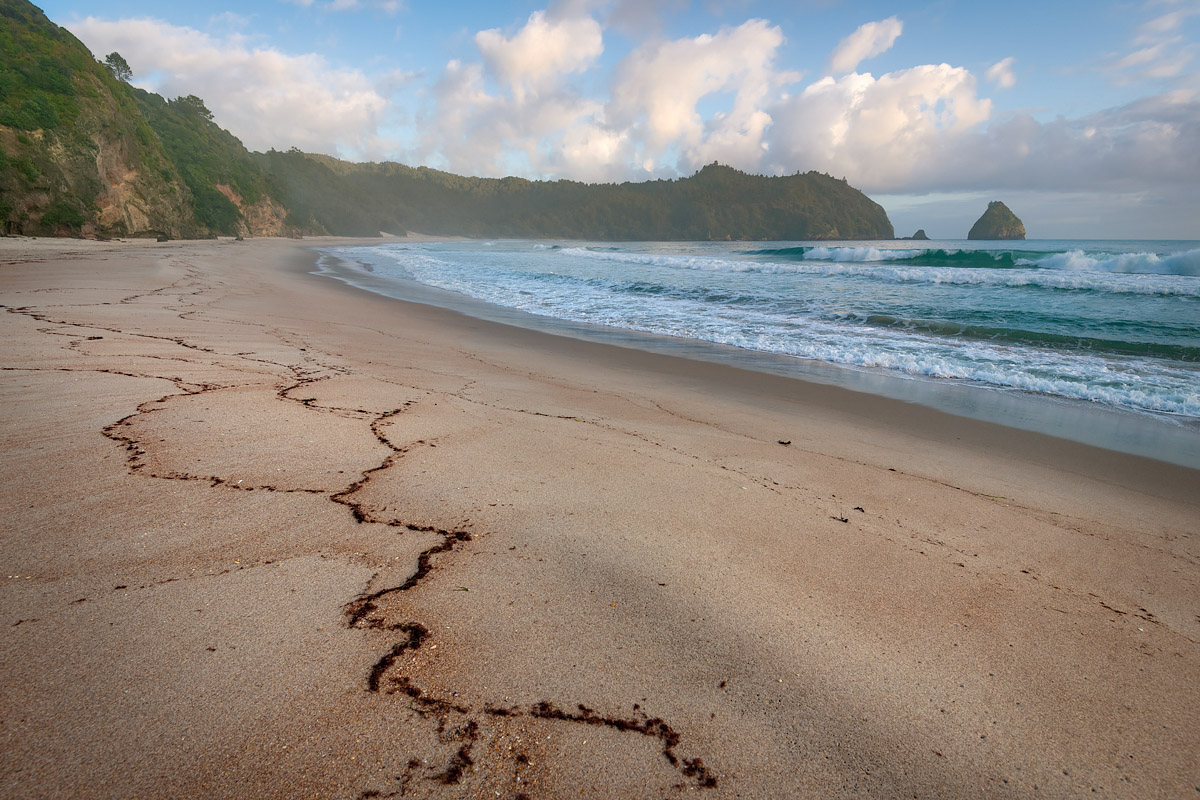A Brief Guide to The Coromandel
Quite why it took me so long to visit one of the most crazily beautiful locations New Zealand has to offer I’ll never know. The Coromandel, a region centred on a peninsula located around 60 km from Auckland (as the tui flies), is a vast area of dramatic headlands, golden beaches, bird-filled forests, and volcanic peaks. (The volcanoes are thankfully extinct I might add). AKA paradise on earth, even more so if you’re a photographer!
I first visited the area on a campervan adventure with my daughter as recently as October 2016 (read that blog here). We only spent the briefest of times in the area, but such was the immediate falling in love that we returned with the rest of the family for a longer trip just a few weeks ago.
While much of The Coromandel has a wild and remote feel to it, there’s no shortage of amenities and accommodation catering for all budgets and tastes. Thames is the largest town (population 7,600) and acts as the service hub for the region. Numerous villages occupy the coastline along many of the bays, beaches and inlets of the area. The rugged nature of much of the terrain means the roads tend to be narrow and windy, but that’s a good thing with the more leisurely pace allowing you to soak up more of the scenery.
Pohutukawa trees cling to seaside cliffs in this long exposure of Wainuiototo Bay
The rising sun pierces through dense pohutukawa forest near Whangapoua
Located at the far north of the Peninsula, the Coromandel Coastal Track provides a three hour snapshot of the best scenery the area has to offer. The track traverses both lush green pastures and coastal forest, all the while offering spectacular views out to a sparkling Pacific Ocean. The two ends of the track, at Fletcher Bay and Stony Bay, are around 2 hours drive apart. Thankfully there are a number of great shuttle services such as Coromandel Discovery if you’d like to eliminate the backtrack.
Fletcher Bay, located at the northernmost point of the Coromandel Peninsula, marks one end of the Coromandel Coastal Walkway

Freedom camping at the Fletcher Bay Campsite
The Coromandel Coastal Walkway explores the north-western tip of the Coromandel Peninsula
If you love the feel of sand between your toes then you’ve come to the right place. Long stretches of golden sand lie between rocky headlands, giving each beach a sense of isolation and it’s own identity. While some of the spots near the populated areas can get very busy in the height of summer, chances are you’ll still be able to find plenty of places where you can have a little slice of paradise all to yourself.
One must do experience is a visit to Hot Water Beach. Here at low tide you can dig your own pool and let it fill with natural spring water rising out of the sand. Although at +60 degrees Celcius it needs mixing with seawater to avoid a scolding!
New Chums Beach: having an entire beach to yourself is not an uncommon experience in The Coromandel
The wild expanse of Opoutere Beach, located 16km north of Whangamata

While being most famous for it’s natural thermal water, Hot Water Beach also has two kilometres of golden sand to explore

A lone fisherman spends the evening catching dinner at Hahei Beach
A moody evening on Hahei Beach, with Maharangi Island (Goat Island) centre of frame
Another must do, and one of the most spectacular attractions in The Coromandel, is Cathedral Cove. A 90 minute return walk, this track takes you to a beach surrounded by spectacular coastal cliffs and includes an impressive rock arch. For 6 months of the year (1 October – 30 April) the car park at the start of the track is closed off to avoid congestion (it’s at the end of a narrow road); the alternatives are a shuttle service or adding a further easy 20 minutes walk to nearby Hahei. But again, if you’re willing to make the effort it’s possible to have the place all to yourself: when taking the below shot I spent the entire pre-dawn and sunrise hours without seeing a single soul.
Sunrise greets the infamous and very popular Cathedral Cove, located near Hahei
For more information
The official visitor site for The Coromandel contains a wealth of information including a great list of must dos. Check out the Department of Conservation website for details on the many walking tracks in the region.
Disclaimer
The writer visited The Coromandel courtesy of Destination Coromandel.









Lovely hosting you to the Coastal Walkway and the results are superb!
Thanks so much Leanne, you’re very lucky to live and work in such a beautiful place. I will be back!